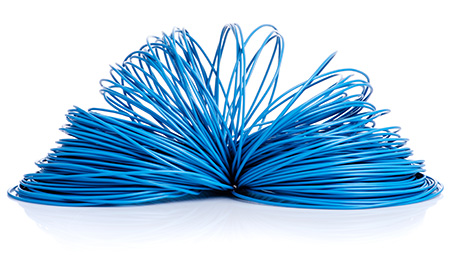EMC Question of the Week: March 30, 2020

The input impedance of a long spool of cable (say 100 meters) measured at 500 MHz is approximately equal to the
- total resistance of the conductors
- termination impedance
- intrinsic impedance of the dielectric
- characteristic impedance of the cable
Answer
The best answer is "d". In fact, this is a common method for measuring the characteristic impedance of cables. For electrically short lengths of cables, we can determine the inductance per unit length by measuring the input impedance with a shorted termination; and the capacitance per unit length by measuring the input impedance with an open termination. The characteristic impedance is then the square root of L/C, which is approximately equal to
where Zin-short is the input impedance when the termination is shorted and Zin-open is the input impedance when the termination is open.
For reasonably low-loss cables, the equation above applies even if the cable is not electrically short. In fact if the cable is long enough, the cable attenuation will ensure that very little of the input signal will reach the termination. In that case, the input impedance with an open termination will equal the input impedance with a shorted termination, and the measured input impedance will be the characteristic impedance of the cable.
At 500 MHz, most practical 100-meter long cables have enough attenuation to prevent the termination impedance from having any significant effect on the input impedance. For example, RG-58 coaxial cable has a nominal attenuation of more than 35 dB per 100 meters at 500 MHz, so any signal reaching the termination and reflecting back to the source is attenuated by at least 70 dB.
Have a comment or question regarding this solution? We'd like to hear from you. Email us at
